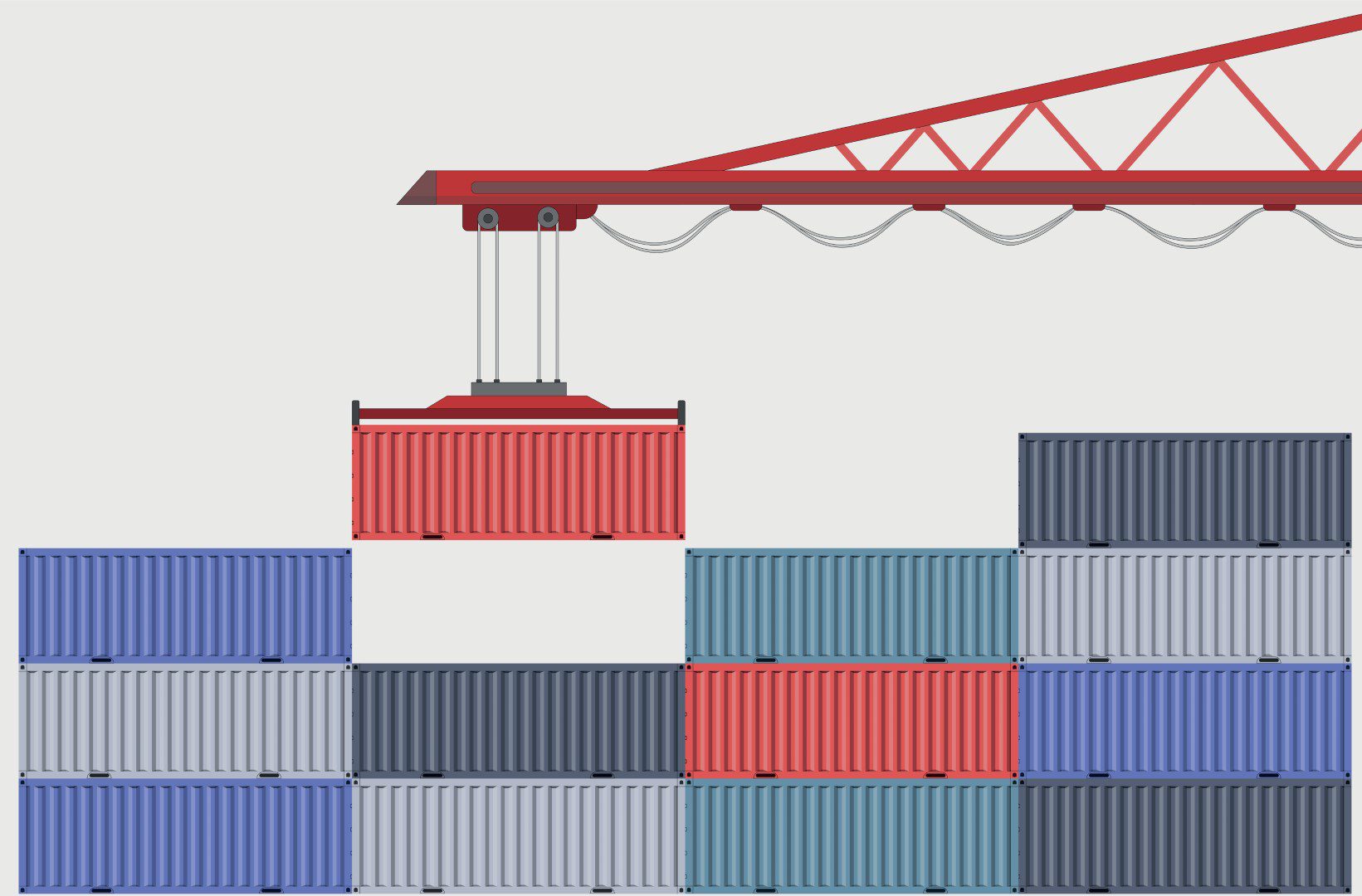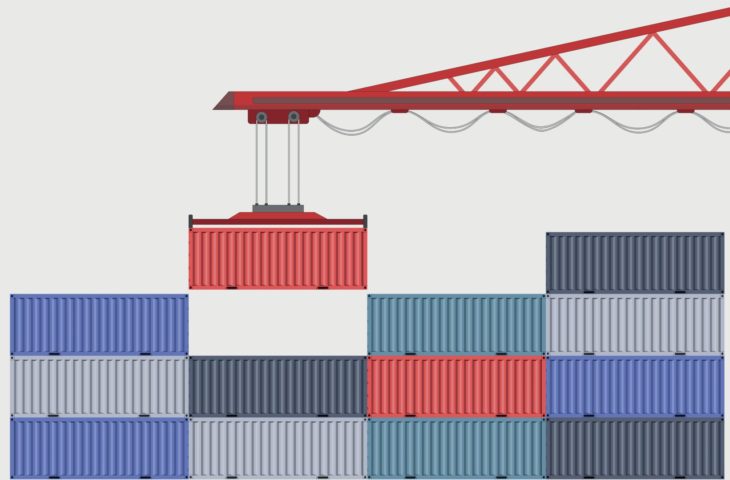Kubernetes has everything you need to turn an application into a well-functioning machine if you have the right product and sufficient in-house knowledge.
Kubernetes is a platform for deploying and managing containers at scale. In recent years it has become a trendy concept and more and more companies are switching from traditional hosting to containers. However, there are also some comments that will not be equally interesting for every company. Before we explain the advantages and disadvantages of Kubernetes, let’s first take a small step back to provide more insight into the concept of containers and Kubernetes.
Instead of one large application doing all the work, the application is divided into different components or containers, such as one component for inventory management and another component for email traffic. These components have everything they need to manage their own part, but also work together seamlessly. Kubernetes forms the control or management layer on top of this container system.
Scalable efficiency
With traditional machines, the website is connected to a virtual machine that pretends to be a physical computer, making it appear as if the website is running on a real system. A virtual machine is software that turns hardware into multiple virtual servers. Each of these servers consists of a complete copy of the operating system and application. This therefore requires a lot of processing power when starting the entire server for each component. Therefore, in terms of scalability, virtual machines are not an efficient choice, on the contrary.
“Unlike traditional virtual machines, where a lot of computing power is lost, Kubernetes gives you the ability to run individual components more or less without impacting your infrastructure,” says Johnny Bouckaert, Team Lead Site Reliability Engineering (SRE ). ) at Combell. “This not only saves a lot of energy and costs, it also ensures that there are no downtimes for the website.” It is also possible to only activate the new container when all components are functioning properly again when it is down.”
You can compare virtual machines and containers with Boxers. A virtual machine is a heavyweight boxer who can hit very hard but is not very agile. The container, on the other hand, is a middleweight who still has a lot of power but can move more smoothly in the ring. Containers therefore offer a better mix of computing power and flexibility.
You can update components without website downtime
Johnny Bouckaert, SRE team leader at Combell
Captain of the ship
In addition to the scalable efficiency, according to Bouckaert, Kubernetes brings another advantage that should not be underestimated: self-healing-Character. This is a feature of Kubernetes that, as the term suggests, allows for self-healing. Imagine one of your applications suddenly crashes. With traditional virtual machines, you hastily call your IT colleague out of bed, who then has to work at night and goes on a nocturnal trip in search of the problem and the solution. Kubernetes does this for you, automatically analyzing unwanted components and then repairing them itself. This gives IT specialists peace of mind and saves them sleepless nights.
Kubernetes also offers everything you need for automation, just like classic systems. However, Kubernetes has a built-in API that is more focused on automation. “These automations ensure that companies save costs in the long term Deployments takes place automatically and just pressing a button is enough to initiate the process. Additionally, Kubernetes provides greater visibility and control over all of your individual components. For example, you can clearly see how much CPU a certain component uses or how much traffic there is,” says Bouckaert.
Get out of the starting blocks
Ideally, companies first come to Combell having found the right reasons to use Kubernetes in their company and start their website from scratch. From this point on, a targeted action plan for getting started with Kubernetes will be started together with Combell. “That’s the ideal world and unfortunately rarely happens,” Bouckaert adds with a laugh.
This brings us to Kubernetes’ first stumbling block. “Most companies that want to get started with Kubernetes already have a website. “This website is often several years old and, in the best case, has always been kept up to date over the years,” says Bouckaert. “To move to a container system, companies need to split their existing website into different applications so that they can function as separate parts. Companies have to take this step themselves and it is often underestimated.”
After the application has been divided into containers, it still needs to be put on Kubernetes. “Just because Docker is running on your system doesn’t mean you can just put your Kubernetes anywhere. Deployment is required to create objects like pods or Burglaries to be able to create,” says Bouckaert. If these terms give you doubts, this is already a clear indication of the next stumbling block.
Stay in the race
There is another side of the coin. Although Kubernetes offers the ideal solution for scalability, efficiency and automation, its complexity is higher compared to traditional systems. Concepts like pods, Burglaries or node Get familiar before you get lost in Kubernetes. A good knowledge of the basic principles is therefore desirable, but at the same time not insoluble. Additionally, Kubernetes is updated twice a year. If you don’t want to stay behind the facts, it’s better to stay abreast of these updates.
Combell as a sidekick
Combell wouldn’t be Combell if it didn’t have solutions in store for the above-mentioned stumbling blocks. “We don’t just offer Kubernetes: there are many providers that do that,” says Bouckaert. “We offer one Service level agreement (SLA),” he continues. “To reduce the complexity of the system, we support customers who do not yet have basic knowledge to get started using calls and examples. If problems arise that Kubernetes cannot solve, we will address them.”
In addition, Combell offers various tools to, for example, measure the performance of individual containers and collect statistics in dashboards. “Sometimes companies send us theirs Pipelines by asking where the mistake is,” says Bouckaert. “We then look for the right solution, but there is no one-size-fits-all answer.” The specific use case and the way the company wants to use it must always be taken into account.”
You won’t find this service with hyperscalers, but of course it comes with a price tag. On the one hand, with Kubernetes you save costs because certain processes are automated and do not require manual work from IT staff, but on the other hand, the integration, especially when it comes to support, comes with a price tag.
“We only had one customer who was using Kubernetes and ultimately decided to switch back to the classic system,” says Bouckaert. The reason? “They didn’t employ enough people to run this system in their company. Not all applications are suitable for Kubernetes. Companies must have the right products and sufficient knowledge,” says Bouckaert. Once a consensus has been reached with the customer, Kubernetes rarely disappoints. Many companies use the platform and that will not change quickly in the future.














